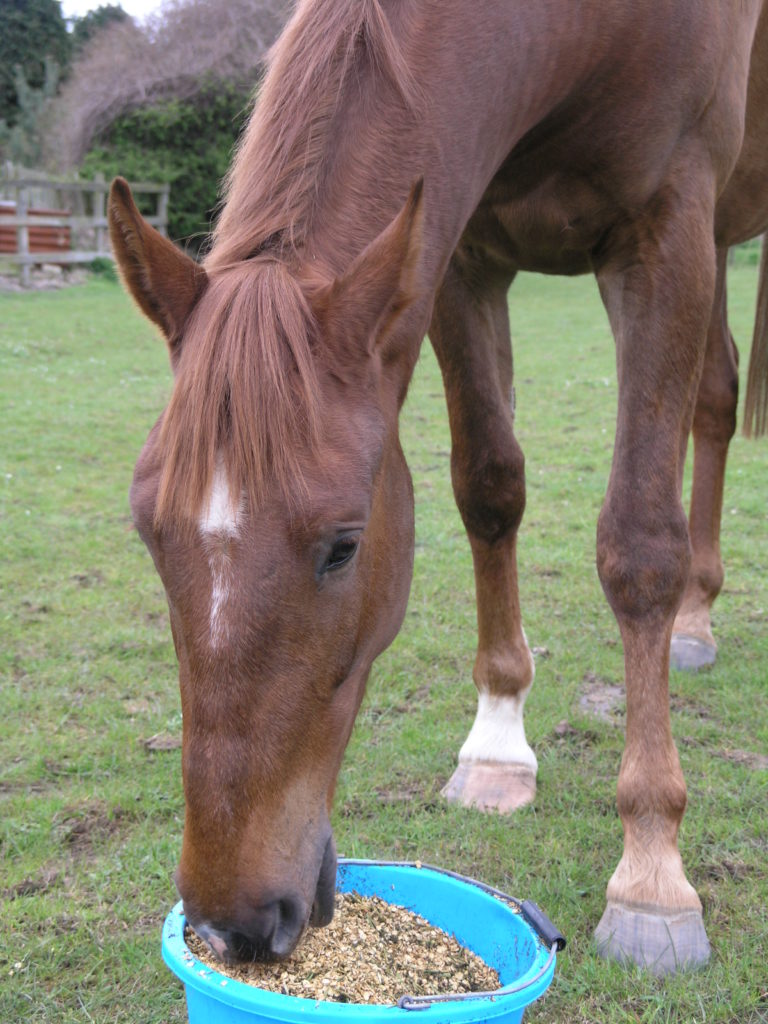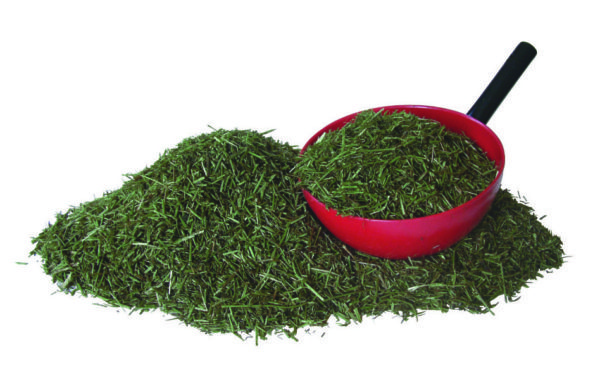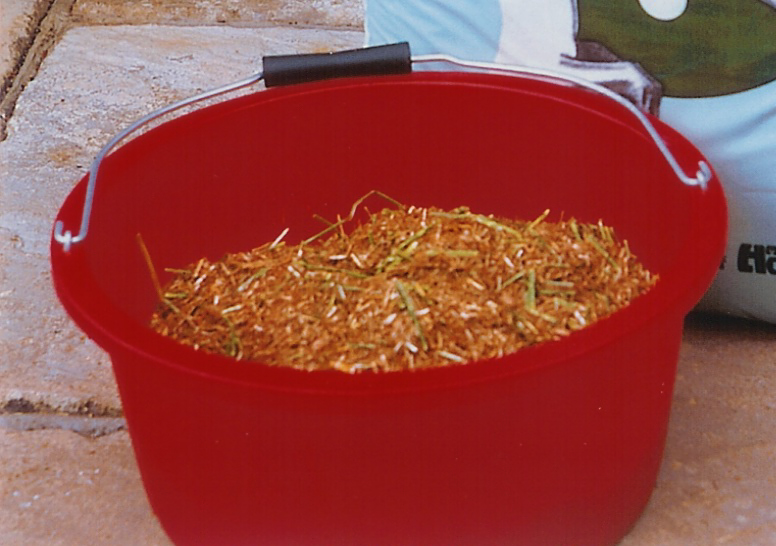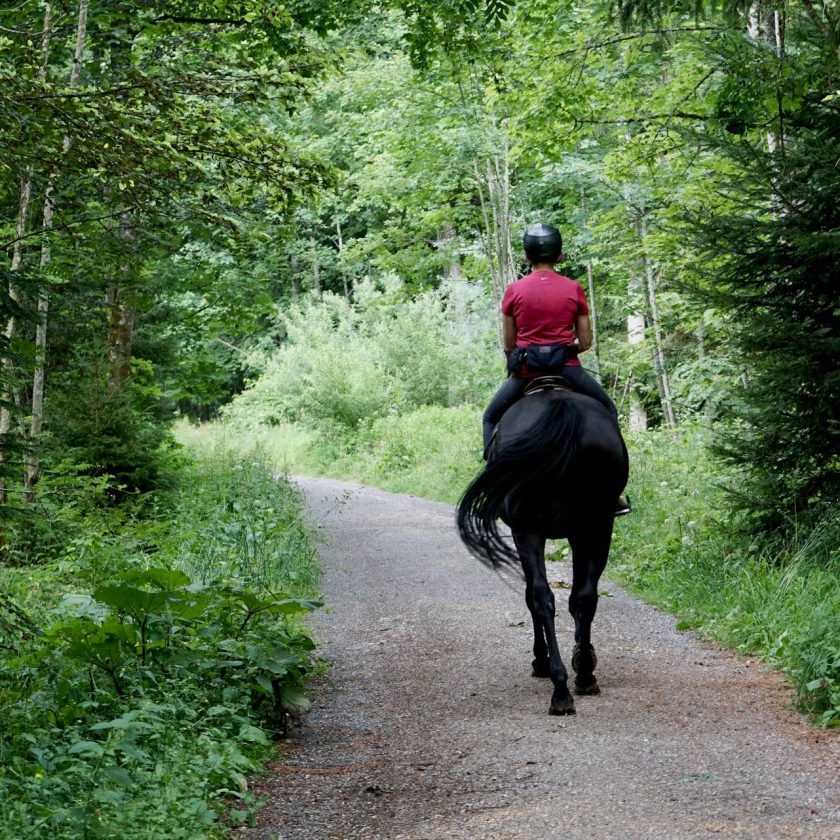By Deborah Lucas MSc.Eq.S.,CBiol. R.Nutr. Consultant Nutritionist to HorseHage
A question many horse owners ask is why feed chaff to horses? And the simple answer is chaff is commonly fed to horses and ponies to stop them eating feed to quickly. However, in recent years reasons, why we feed chaff, have extended beyond simply slowing the quick eater down. For example, when good quality hay is scarce, chaff feeding is often increased as it provides a valuable hay replacer.
What is Chaff?
Chaff is quite simply dried forage that has been cut into small pieces, in contrast to the long grass stems in hay and haylage. There are many different types of chaff and chaff mixes on the market today, such as chopped hay, alfalfa, dried grass and straw, or mixes of one or all of these. Most are made by forage producers and bagged for ease of transport and to help maintain freshness. Molasses and/or oil or another mixer such as wheat or corn syrup is used to reduce dust and increase palatability. Flavours may be added such as cherry, apple or spearmint and herbs including garlic. However, thought and consideration should be given to the additional sugar levels these feeds provide.
Forage is dried at high temperatures which kills bacteria and spores, but preserve the nutrient value, leaving it clean and nutritious.
Why feed Chaff?
Many horse owners feed a small amount of chaff just to bulk out the concentrate feed, but there are other beneficial reasons for its use. Horses are predominantly fibre digesters or hindgut fermenters. Within the hindgut, are millions of micro-organisms that play a vital role. This is to break down digestible fibre content of the natural herbage diet, releasing energy-giving substances which the horse then uses.

Contrary to some beliefs, fibre is not just a ‘filler’. The hindgut micro-organisms create a delicate microbalance which, if upset, may result in health and performance problems and also may suppress the immune status of the horse, often creating a downward spiral of health problems.
The Respiratory System
Forage however, must not just meet the needs of the digestive tract, but also those of the respiratory system. Where conserved forage is fed it must be of good quality nutritionally but it must also be clean, i.e. free from moulds and fungi and therefore not compromise respiratory function.
The deleterious effects of feeding poor quality forage cannot be underestimated. Forage also provides energy, protein and other important nutrients such as vitamins and minerals and is an entirely natural feedstuff for horses.
Chaff and Digestion
It is generally well known that feeding plenty of good quality fibre helps to maintain the health of the digestive tract and has an important role in immune function.
Trickle feeding fibre such as chaff (a little at a time) encourages horses to chew, producing much more saliva than when concentrates are fed on their own and this alkaline saliva buffers the stomach acid. The presence of a high fibre feed such as chaff in the stomach helps to neutralise stomach acid. Chaff will also encourage chewing, prolonging feeding time and the production of increased amounts of acid-buffering saliva. Furthermore, alfalfa may actually have a more protective effect than other hay-based chaffs because of the high protein and calcium content giving improved buffering properties. Feeding a bowl of alfalfa chaff or any chaff prior to exercise may be helpful as this will help to reduce the splashing effect of acid on an empty stomach.
Feeding large quantities of high starch, cereal-based concentrates may swamp the foregut and be rapidly fermented by the hindgut micro-organisms. This may lead to increased acidity in the hindgut, followed by the proliferation of undesirable micro-organisms and the delicate microbial balance is upset. Feeding chaff will slow down the horse’s intake by encouraging chewing, helping the horse to digest the feed properly.
Molasses
Molasses is often added to chaff mixes to reduce dust and increase palatability. Molasses has had a bad press and many horse owners have taken the idea that sugar is bad for humans and also to their horses.
Molasses is actually the dark brown syrup-like residue produced as a by-product of the sugar extraction process from sugar cane or beet. Molasses contains roughly 40-50% sugar but is only added to chaffs typically between 10 and 40%. The horses’ natural diet of grass often contains 20% sugar (on a dry matter basis) and horses will consume large amounts whilst grazing, mostly with no harmful effects. In fact a 500kg horse may consume roughly 10kg dry matter (or 50 kg fresh weight) of grass per day thereby eating about 2 kg or 2000g of sugar i.e. two bags of sugar every day! The horse is very well adapted to digest and metabolise sugar as long as it is ‘trickle fed’ (as in grazing) and not offered in one large meal.
Molasses is also present in molassed sugar beet pulp as some is added back during production. Molassed beet pulp, therefore, contains roughly 20% sugar, similar to grass, but it is fed at much lower rates. Sugar is actually vital for horses as an energy source and the central nervous system –including the brain – specifically requires glucose for energy.
Other benefits of the addition of molasses to chaff mixes is the natural nutrients contained within, such as potassium, iron, calcium, salt and B vitamins. So, molasses is actually useful in moderation as long as the horses’ own natural ability to digest sugar in the small intestine is not overwhelmed. Contrary therefore to popular belief, the typical addition rate of molasses to chaff mixes means that grass usually contains much more sugar than molassed chaffs!
Other ingredients
Other ingredients that may be added to chaff include soya oil to increase energy content with some chaffs containing as much as 20% oil but more commonly around 10%.
Flavours that may be added include citrus, apple, teaberry and cherry. Cherry has been shown to be one of the horse’s favourite flavours!
Apple may be added for flavour and sweetness. Many horses require medication at some time such as daily doses of bute, for example. Also some horses dislike the addition of supplements or additives to the feed and will reject it. Flavoured chaffs are excellent for helping to mask the drugs and improve palatability of the feed. Mollichaff Applechaff, for example, contains natural apple pieces and apple flavouring making it highly appetising for horses. This type of chaff is ideal for fussy feeders.
Chaff for older horses
For veteran horses with poor dentition, chaffs are a valuable source of chopped or short fibre, reducing the need to rely so much on the teeth for cutting. They can provide a more palatable base for a feed to help encourage appetite, whilst maintaining the intake of vital fibre.
The choice of chaff product will really depend upon the horse’s bodyweight, work level or stage of the breeding cycle. Youngstock and horses in hard work may benefit from alfalfa chaffs due to the higher protein, energy and mineral levels whereas overweight horses or those in light work would be better suited to lower energy hay/straw chaff mixes. Horses in hard work could be fed high oil chaffs to help provide extra energy.
Whichever chaff is preferred, it must be made from good quality ingredients from a known reputable supplier. It should be dust-extracted, smell fresh and should not be dusty or contain boluses or chunks of molasses in gluey balls and have no obvious contaminants.
For more information on feeding your horse or pony, please contact the HorseHage Helpline on 01803 527274 or visit www.horsehage.co.uk






